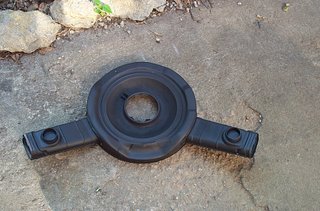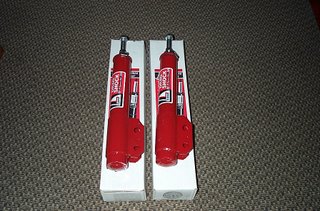


I was never a big believer in prep work, but as I have time and I am not in a big hurry, I am taking my time when painting new/used items. I always wondered why when I have painted engine parts and stuff in the past, I would always get runs, fish eyes, etc. When you take the time to scuff, clean and use self-etching primer on items, it really makes a big difference in appearance and how long it will last. I have included pictures of the Dual Snorkel Air Cleaner assembly I finished. Yes, I am going to use the original air cleaner assembly when racing. Independent test show that the factory air cleaner would flow about 535 CFM. Based on a quality air cleaner element (K&N) and a small change in the routing of the air tubes I can estimate a CFM flow of about 881. Based on my calculations, I should see a 2-4 tenth drop in the quarter mile times.
I can say one thing about taking this building a race car seriously..I am actually learning from this project. I am surprised on the amount of geometry, algebra, physics, etc that are needed to build a car. MY BRAIN HURTS....That's it for now.












